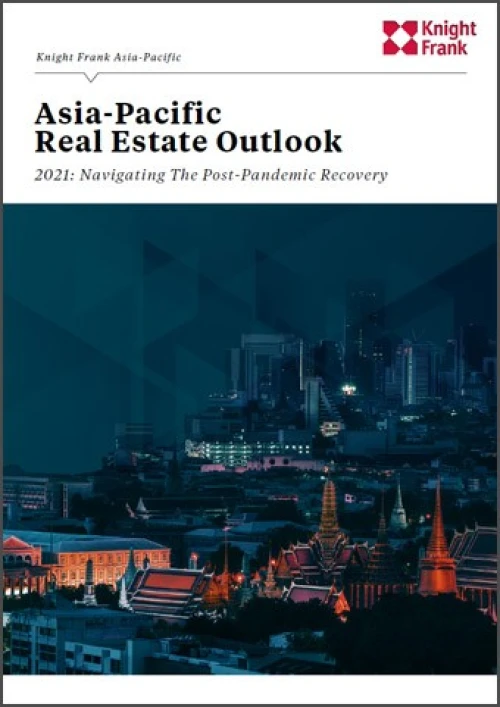Asia Pacific Real Estate Outlook - 2021: Navigating The Post-Pandemic Recovery

Trends to Watch
We entered 2020 with cautious optimism as Asia-Pacific property markets remained relatively healthy and the phase one trade deal was signed between the US and China. Then COVID-19 struck, throwing markets into turmoil, and with it, knocking many of our previous forecasts off-course. This year has been dominated by the pandemic, with activity and performance of the various real estate asset classes linked to just how they have been impacted by the virus. As this report highlights, geographies and property types have all been influenced by lockdowns, restrictions, and the ensuing economic weakness. However, as we now look towards 2021 and the potential recovery it may bring, here are six trends that give a sense of what lies ahead.
1 Work-from-home experiment will leave a lasting impact
Corporates across most of Asia-Pacific are now re-examining what the new workplace will look like following an extended period of forced working from home. While some considerations are purely cost driven, corporates are undoubtedly thinking differently about how the workplace can effectively meet their employees’ needs. Workplace strategy will vary across the region based on sector, market, and cultural nuances. On balance, we do not believe that working from anywhere will overwhelm the traditional office, although some elements of flexible working will become more mainstream.
2 Logistics driven by e-commerce and supply chain security
The industrial and logistics markets across Asia-Pacific have been a bright spot in 2020, with our forecasts both in the occupier and investment market pointing to a repeat in 2021. The growing adoption of 5G, enhanced by IoT devices, will help drive efficiencies, attracting more customers online while offering a host of new functions to logistics companies. Meanwhile, increased concerns around supply chain resilience and manufacturing security will continue to drive activity around the region with certain sectors such as biomedical shifting from ‘just in time’ to ‘just in case’.
3 Investors circling for distress may be disappointed
While there have been some commercial assets traded at a modest discount in recent months, the optimistic view of a recovery in 2021 means that those looking for a bargain may have to move up the risk curve to find distress. With more uncertainty around the road to recovery back to pre-COVID levels, sectors such as hospitality and retail will be where these opportunities will lie.
4 Monetary policy to remain supportive of residential markets
Residential markets have surprised many on the upside especially in markets like Singapore and Hong Kong SAR where new launches continue to see healthy demand; despite weakening economic conditions. With low interest rates and policy makers unlikely to dampen buoyant markets, we expect 2021 to continue to be a positive year for most of the region’s market.
5 Real estate to contribute to the ‘Green Recovery’
China’s plan to go carbon-neutral by 2060 is a major statement that will impact real estate. With the built environment responsible for up to 40% of carbon emissions, expect it and others to increasingly look at decarbonising real estate through legislation and standards. Developers, end-users and creditors who are all placing a greater emphasis on Environment, Social, and Governance (ESG) and sustainability will place going green higher on the agenda.
6 US-China relations to continue to be important for the region
Behind the rhetoric, bilateral US-China investment and trade continues to be of huge significance to both countries and the region. While the President-elect may utilise different tactics, such as re-engaging with multilateral institutions and agreements, the broad US policy of being tough on China is likely to continue. If the change in tactics leads to a slight thawing of tensions, this could reduce uncertainty and boost sentiment domestically and throughout Asia-Pacific.





